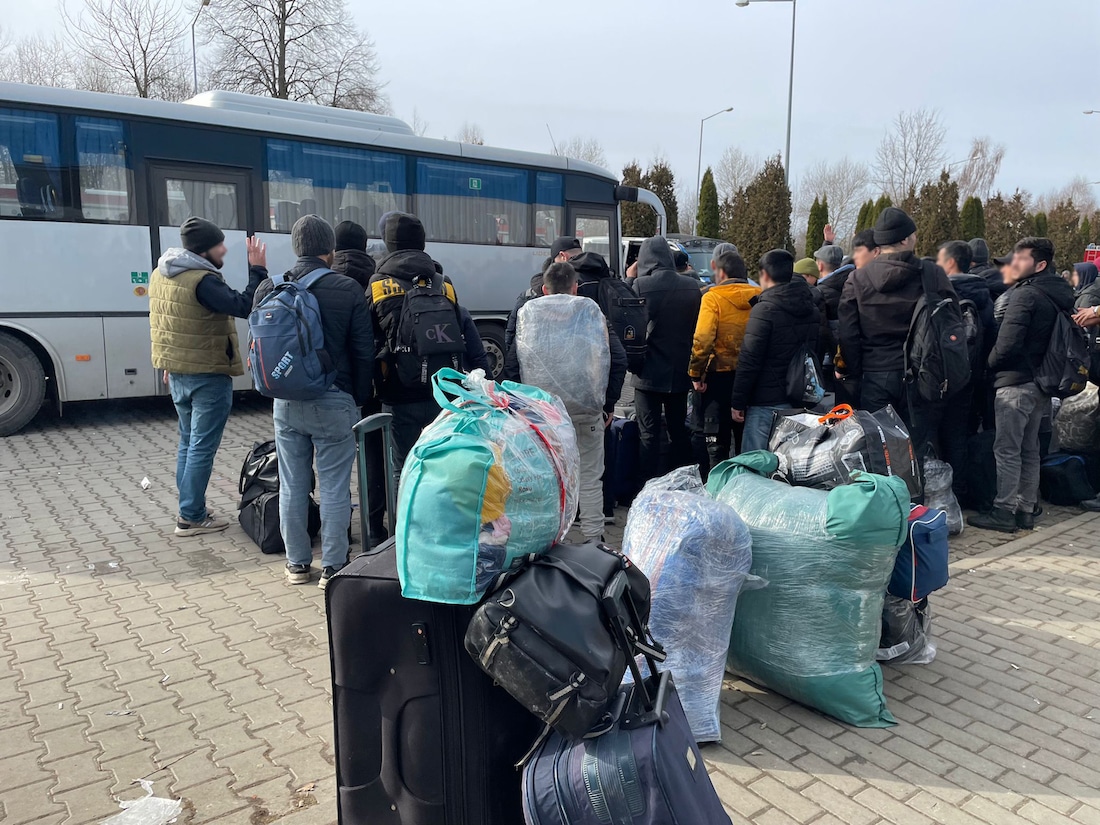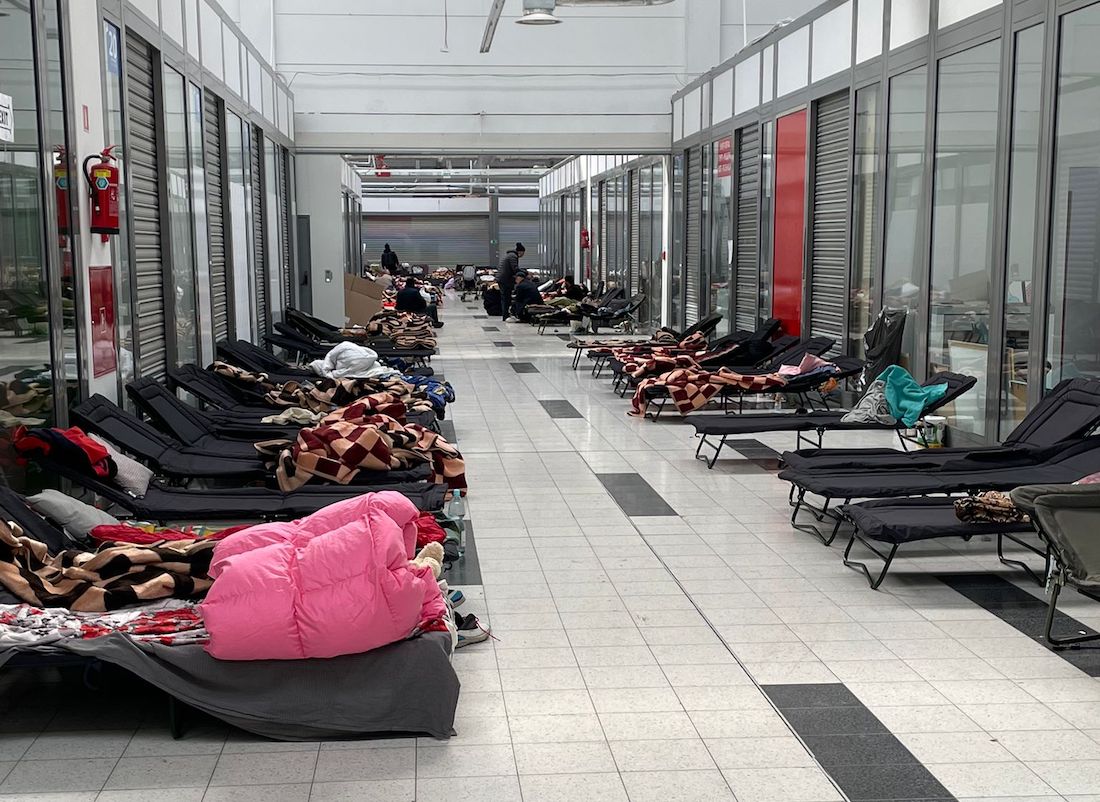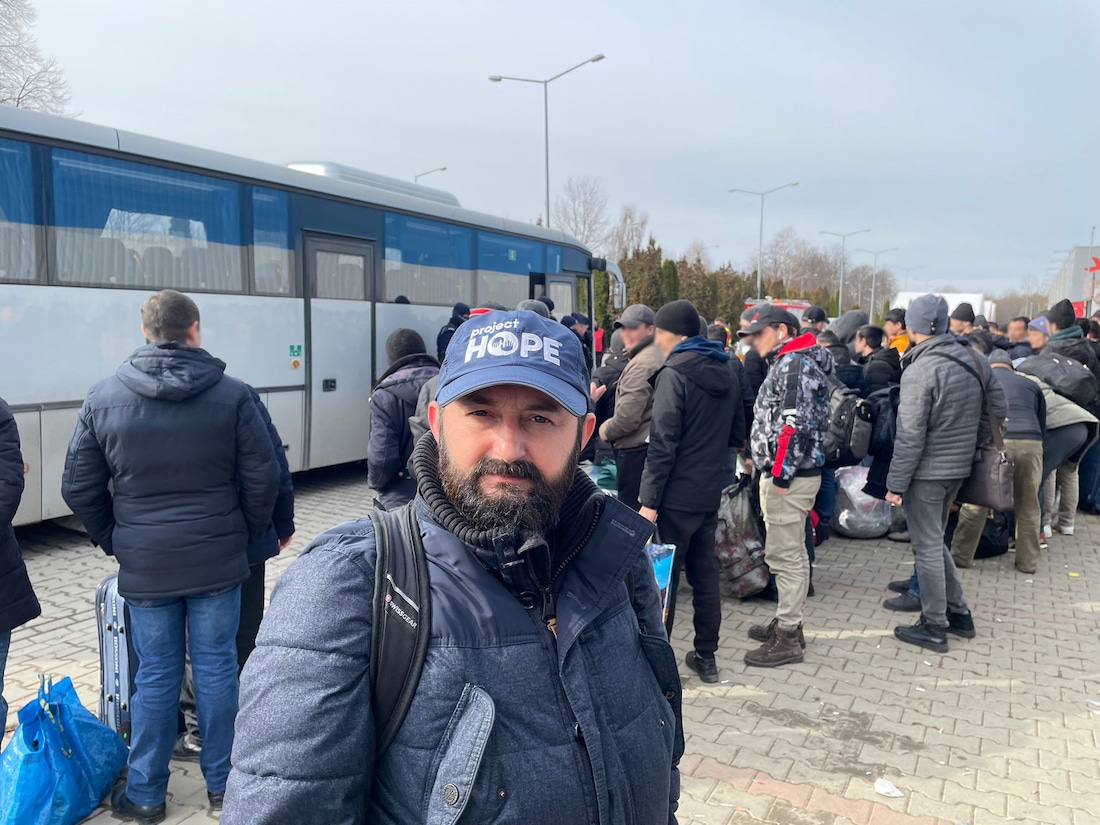
Project HOPE Emergency Response Leads Share Observations from the Impending Humanitarian Crisis for Ukrainians
More than a half-million Ukrainian refugees have fled to Poland seeking safety. Urgent Humanitarian Assistance Needed.
Washington, D.C. (March 2, 2022) – As Russia’s invasion of Ukraine intensifies, it is creating a widespread humanitarian crisis that could prove catastrophic for millions of Ukrainians.
The global health and humanitarian organization, Project HOPE has deployed teams to assist Ukrainian refugees and is shipping essential medicines and relief supplies to multiple host countries to ensure that people have access to medical treatment and supplies.
“We are in the early stages of a far-reaching humanitarian crisis on a scale that Europe has not seen since World War II,” said Project HOPE’s regional manager for the Balkans, Vlatko Uzevski, who is currently in Poland. “More than 670,000 people have fled Ukraine, with more than half of them fleeing to Poland. Schools and hospitals have been hit. The humanitarian impacts of Russia’s invasion are going to be profound, and the world must prepare to assist millions of Ukrainians who have left everything behind to seek safety.”
“The people we are meeting in Poland — teachers, doctors, civil servants, and business owners — have had their entire lives upended by this invasion. These refugees have no idea when they will be able to return home or what home they will return to. Many of them only have the few belongings they were able to grab before fleeing,” Uzevski added. “Within these waves of refugees are untold thousands who are pregnant, nursing, elderly, or managing serious medical conditions. The doctors and medicines they rely on are gone. There were already 3 million people in Ukraine in need of humanitarian assistance before this invasion. They are the ones who will bear the brunt of this war.”
Project HOPE currently has emergency response teams in place in Krakow, Poland; Bucharest, Romania; and Chisinau, Moldova as well as within Ukraine. Project HOPE is working with the World Health Organization (WHO) Health Cluster and Logistics Cluster as well as the Ukrainian Ministry of Health and other authorities.
“Imagine four million people – the population of the city of Los Angeles – being displaced without access to food, water, shelter or medicine, and one gets a sense of the scope of this humanitarian disaster. The world needs to come together to address it. Everyone can do something to help,” said Cinira Baldi, Vice President, Chief Development & Communications Officer. “We have deployed a team of seasoned humanitarian responders, but the need for resources will be great for months to come and it is incumbent upon all of us to assist.”



How Project HOPE is Responding
- Project HOPE continues sourcing and shipping essential medicines and medical supplies for primary health and trauma care to affected areas, including hygiene kits, Interagency Emergency Health Kits (IEHKs), insulin, and more.
- Project HOPE activated an emergency response team to provide immediate health and humanitarian relief and has deployed team members to Poland, Romania, and Moldova. Additionally, we have medical teams on standby to provide health screenings and care for Ukrainian refugees.
- Project HOPE is in close coordination with WHO and European partners to respond to most critical needs in the region.
- Project HOPE began working in Ukraine in 2002 with a life-skills program focused on drug use prevention, HIV prevention, and education for children in primary schools. In 2007, Project HOPE began a five-year, USAID-funded HIV/AIDS Service Capacity project in Ukraine focused on community mobilization for the country’s most at-risk populations. From 2012-2017, Project HOPE helped improve the health of Ukrainians by enabling the Government of Ukraine to decrease the burden of Tuberculosis and lower TB morbidity and mortality.
Facts & Figures
- Ukraine is one of the world’s most long-standing humanitarian crises due to ongoing conflict that began in 2014.
- Fighting in Ukraine has been Europe’s deadliest conflict over the last two decades. More than 10,000 civilians have been killed or injured and 1.4 million people have been internally displaced. More than 3 million people were in need of humanitarian assistance before this latest crisis.
- Ukraine has the highest percentage of vulnerable people affected by the existing humanitarian crisis. Elderly and persons with disabilities account for more than 30% of the people living in conflict-affected Ukraine, according to the UN.
- Pre-existing conflict has created access issues for clean water, mental health issues related to conflict and displacement, and lack of access to education.
- The current conflict will create additional and renewed crisis for millions of people who will be potentially displaced and in need of health services.
Interviews available upon request.
Contact: Project HOPE, Media@ProjectHOPE.org